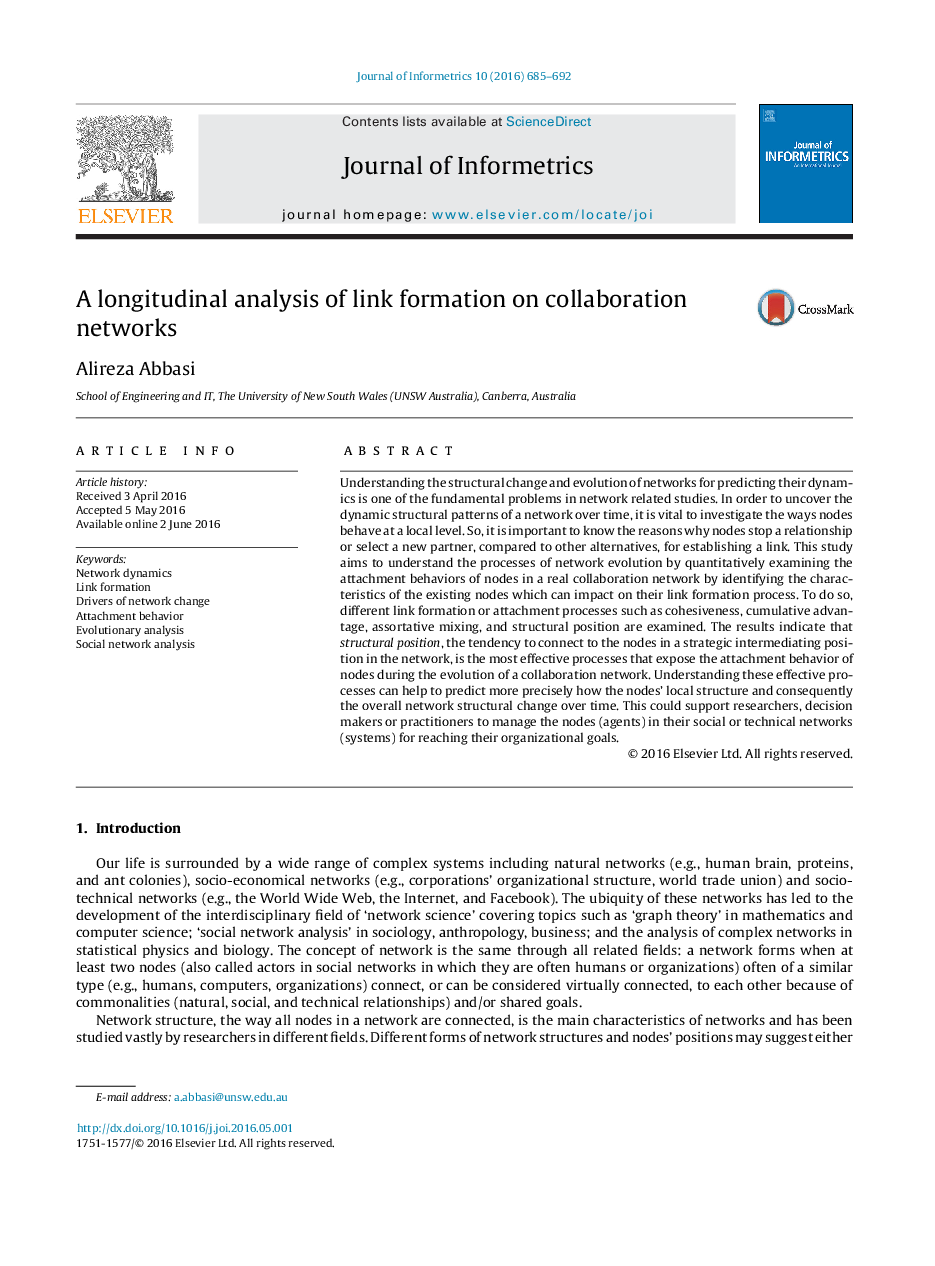| Article ID | Journal | Published Year | Pages | File Type |
|---|---|---|---|---|
| 4968132 | Journal of Informetrics | 2016 | 8 Pages |
Understanding the structural change and evolution of networks for predicting their dynamics is one of the fundamental problems in network related studies. In order to uncover the dynamic structural patterns of a network over time, it is vital to investigate the ways nodes behave at a local level. So, it is important to know the reasons why nodes stop a relationship or select a new partner, compared to other alternatives, for establishing a link. This study aims to understand the processes of network evolution by quantitatively examining the attachment behaviors of nodes in a real collaboration network by identifying the characteristics of the existing nodes which can impact on their link formation process. To do so, different link formation or attachment processes such as cohesiveness, cumulative advantage, assortative mixing, and structural position are examined. The results indicate that structural position, the tendency to connect to the nodes in a strategic intermediating position in the network, is the most effective processes that expose the attachment behavior of nodes during the evolution of a collaboration network. Understanding these effective processes can help to predict more precisely how the nodes' local structure and consequently the overall network structural change over time. This could support researchers, decision makers or practitioners to manage the nodes (agents) in their social or technical networks (systems) for reaching their organizational goals.
